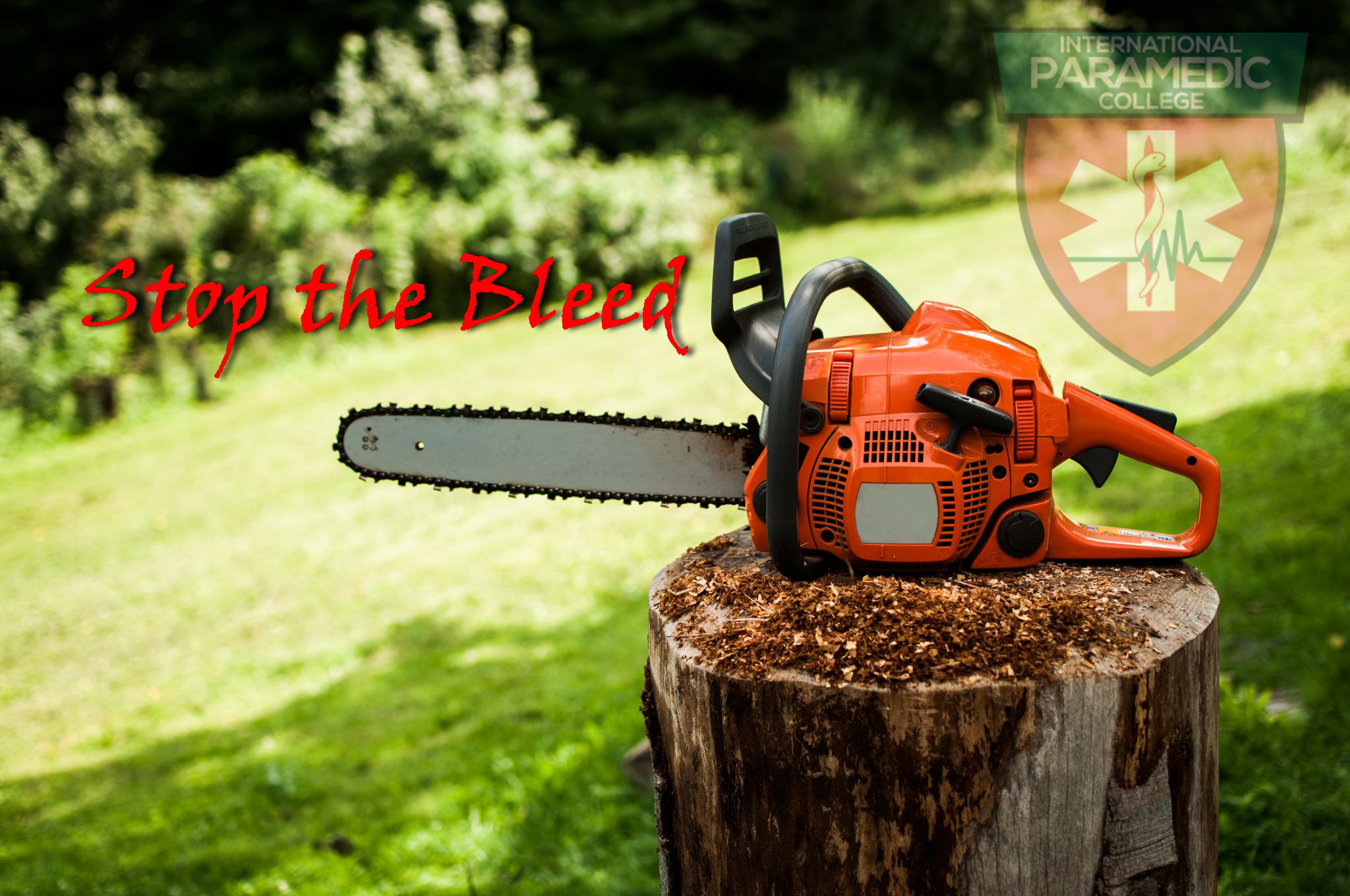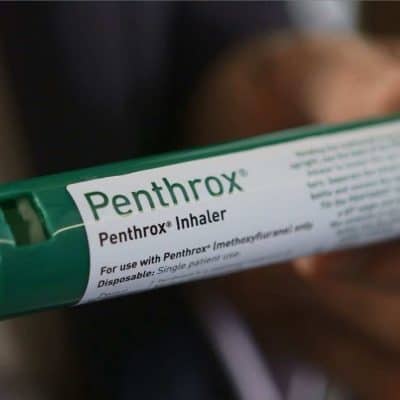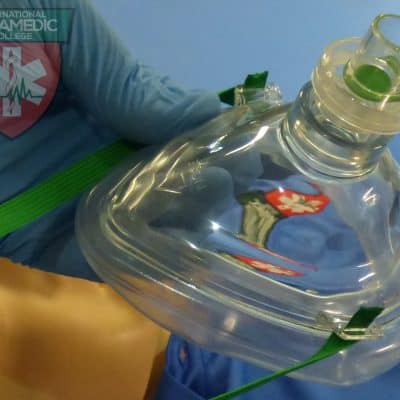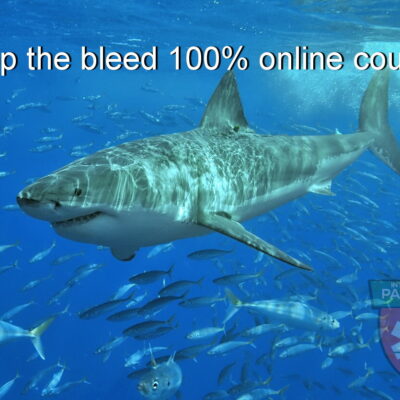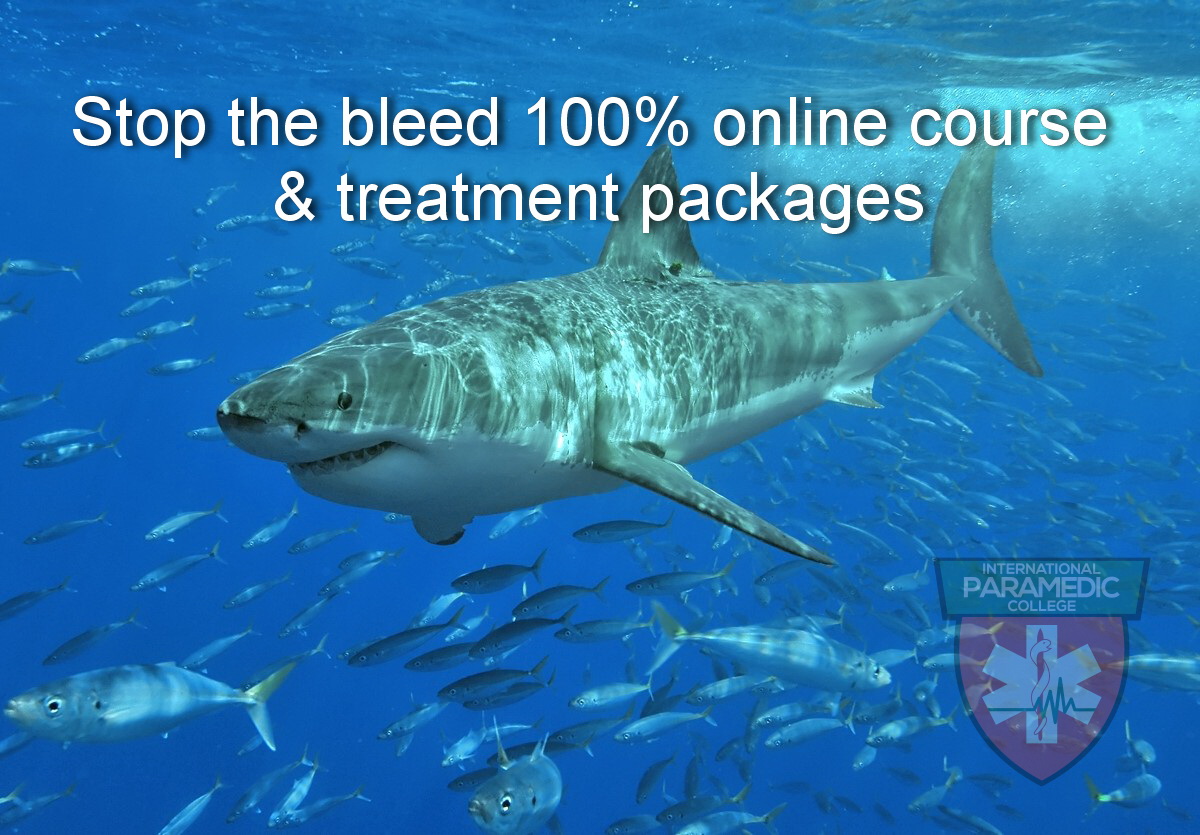

military quality tourniquet are great at controlling bleeding in the field
Free Community Education Program Stop the Bleed
Shark Attack Immediate Treatment
According to the Australian Shark Attack File (ASAF), which has been maintaining records since 1984, there have been an average of 16 shark attacks per year in Australia over the last decade. However, it is important to note that the number of attacks can vary significantly from year to year, and the risk of a shark attack varies depending on location and activity.
Of the attacks that do occur, the majority are non-fatal. On average, there are about one to two fatal shark attacks in Australia per year.
Treating the arterial bleeding from shark bites needs an arterial tourniquet, and it would be best if you had training in how to stop the bleed. Like lots of things that paramedics, first responders or first-aiders, come across in pre-hospital care emergency situations, it could be a relatively minor injury or involve major torrential life-threatening bleeding. Recent shark incidents around Ballina, Byron Bay, Lennox Head, Evans Head and other areas of Australia have us scared and understandably. We have a community course that shows locals what to do “until the ambulance arrives.”.
First Aid Management of Extreme Bleeding
First aid training in the management of traumatic wounds is initially about controlling the blood loss. We believe the CAT 7, The Combat Application Tourniquet is the best and quickest tourniquet on the market for the initial treatment of arterial bleeding from shark bites. How the first aid treatment is managed initially at the scene can have a dramatic effect on the victim’s chance of surviving the attack. The Australian Resuscitation Council (ARC) is the peak body who makes recommendations that all first aid programs follow in Australia. Its guidelines recommend firm direct pressure, sufficient to stop the bleeding, over the bleeding site. The ARC suggests you could use a pad or your hands.
If bleeding continues you should apply another pad and a tighter dressing over the wound site. If a limb is involved then you need to check circulation to the hand or foot regularly.
Other things that will help control bleeding are elevation of the bleeding part, restricting movement and of course, you should have the patient remain at rest.
How to use a tourniquet to control bleeding
Arterial blood loss can be rapid as the heart is pumping the blood out each time it beats. As a last resort and only when your other attempts to control bleeding have failed the ARC recommend you apply a tourniquet to the limb to control life-threatening haemorrhage with a wide bandage high above the bleeding point.
The time of application of the tourniquet should be noted, and it should not be removed until the victim receives specialist care. I find if you think of a tourniquet as being like the blood pressure cuff used by your doctor, paramedic or nurse to take your blood pressure. That feeling when they inflate it around your arm is when it works like a tourniquet to initially stop the arterial blood flow and then let it re-establish as the cuff is deflated to measure your blood pressure.
Military conflict accelerates the pace of change in first aid management of trauma A range of new tourniquets are around now which have come from military application and development. We can show you a range and some samples of these new products and how they work. First aid training courses may change and there may be a wide-spread adaption of some of these military style products in general first aid treatment of bleeding in the future as revisions of the medical evidence and clinical trials and application evolve.
Major blood loss like this can quickly lead to “Hypovolaemic Shock”, if we break that word down it doesn’t seem so bad. Hypo in medical speak means low, just like hypothermia means low body temperature. The Volemic bit means volume, and shock means a widespread inadequate perfusion or in simple terms not enough blood to transfer oxygen around the body to meet its needs. At its simplest level, it is oxygen to the cells that keeps us going. An old paramedic adage is that “perfusion determines treatment”.
Understand what you need to do in a shark attack
If this all sounds a bit daunting perhaps it’s time to come along to a first aid class here in Byron Bay, Alstonville, Ballina or Lismore. In the course, I can show you some “tricks of the trade” to control bleeding and a range of new products that can help.
Any way you look at it shark attacks are traumatic events and there will be a lot of emotional trauma as well as the physical trauma of the initial event. The initial clinical intervention and management is what I have tried to focus on here, Paramedic thinking is about the immediate response. You have to be able to survive the initial event and then manage the recovery phase over the longer term
Full details on the management of bleeding and other emergency situations are available in the ARC guidelines
You can contact us to talk to your local community group about how to manage severe bleeding and what other products and skills are needed.
Shark Attack Pack
We have developed a shark attack pack containing a military-style tourniquet, emergency bandages and training in their use. We also offer free stop the bleed training in all our first aid courses and paramedical education programs.
Free “Stop the Bleed Course” for community and surf groups
We offer free training and education programs to community groups in our online “stop the bleed course” to help communities understand how to control traumatic arterial bleeding fast. Contact us for details to see if your community group qualifies

Craig Nolan is an educator and manager with overall responsibility for the implementation of the International Paramedic College Group’s training, strategy, initiatives and expansion. Craig is a former Intensive Care Paramedic and Educator with The Ambulance Service of NSW and he is an active Committee member of Paramedics Australasia, the peak body for Paramedics in Australia and New Zealand.



